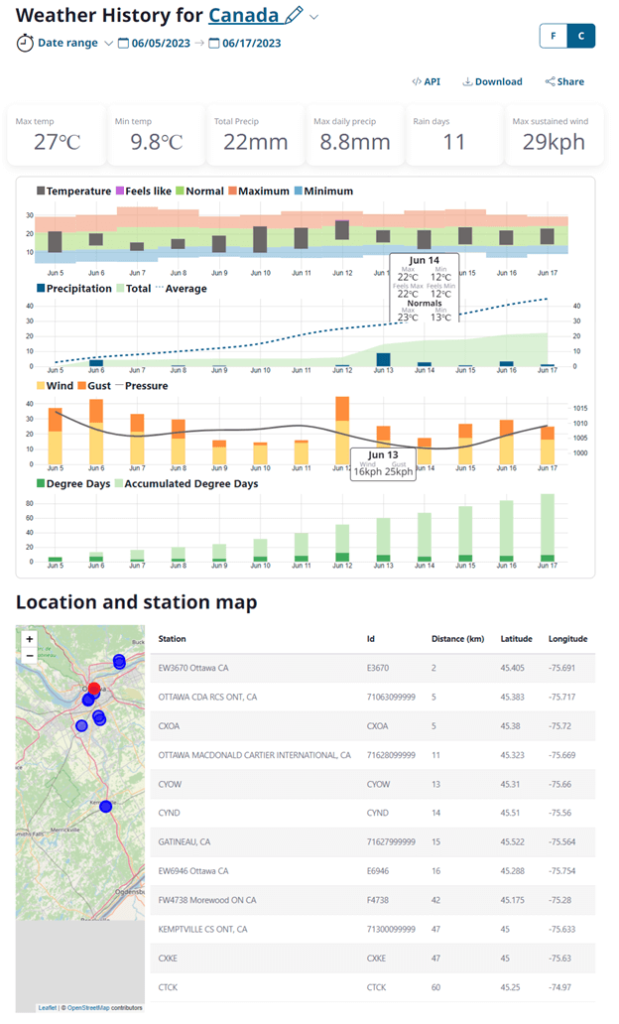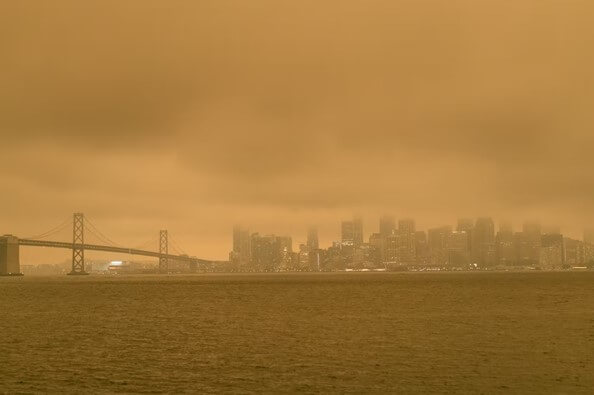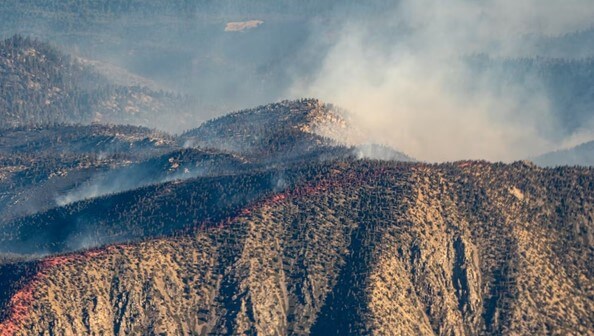The region of Northeastern United States was heavily covered by the smoke on Wednesday, turning the sky yellowish gray. Warnings were issued for residents to stay indoors and close their windows. Wildfires generated smoke in numerous regions throughout Canada.

On Wednesday night, the United States Environmental Protection Agency published a statement warning of “unhealthy or worse categories” of air quality across much of the mid-Atlantic, northeast, and upper Great Lakes regions.
Authorities in several states in the United States issued “air quality alerts,” and the smoky conditions were predicted to last for days.

The rise of dangerously high levels of airborne soot results in the worst condition in Central New York. On Wednesday, New York City authorities urged residents to remain indoors. Late on Tuesday afternoon, the critical weather completely blocked out all sight of New Jersey across the Hudson River.
The reason wildfires started is because of persistently high temperatures and low humidity.
Eric James, a modeling expert affiliated with the Cooperative Institute for Research in Environmental Science at the University of Colorado and the National Oceanic and Atmospheric Administration, described the month of May as exceptionally hot, breaking records across many parts of Canada.
Joel Thornton, professor and chair of the Department of atmospheric sciences at the University of Washington, claims that heat waves will become more intense and last longer, leading to larger and more smoke-producing fires as the earth warms.

Large fires in the Quebec area have emerged only 500 to 600 miles (about 800 to 970 kilometers) from Rhode Island. These blazes followed a similar series of blazes in Nova Scotia.
Regarding the Quebec blazes, James remarked, “I can’t recall witnessing fires of this magnitude in the past decade.”
The United States has also been impacted due to the western Canadian wildfires that have released smoke for weeks.
However, it is the recent fires in Quebec that have caused hazardous smog along the east coast.

Smoke from huge, intense fires can travel hundreds of miles due to the power of the wind at high altitudes. This can lead to harmful conditions far from the forest fire’s original location.
But for the smoke to cover major cities in the United States, several factors must come together, including a dry, hot spring. According to Bob Henson, a Yale Climate Change Connections meteorologist, the weather then took over.

A low-pressure system has formed near Nova Scotia, causing air to circulate counterclockwise in Canada. That causes the air to blow south over the fires in Quebec. The winds pick up the smoke there, and, after passing over New York, they head east. The brought the smoky air all the way to the coast.
Henson stated that the wind trajectory determines the smoke’s path as it moves.
Although this specific wind pattern is not uncommon, the combination of circumstances is unique.
“Regrettably, the timing of these weather patterns coincides with a situation that was highly conducive to the occurrence of significant fires,” Thornton explained.
It is predicted that even the worst conditions should only last a day or two at most due to the changing weather patterns. However, James claims that the lingering effects of the smoke may take up to a week to disappear.
Under a microscope, smoke’s constituent particles reveal a surprising diversity of shapes, ranging from spherical to corkscrew-shaped.
According to Rima Habre, a specialist in air quality and exposure science at the University of Southern California, the composition of the substance is not limited to a single type of chemical. It could encompass various gases, carbons, and harmful metals. As it moves, Habre explained that it undergoes transformations and may include ozone as well.
Habre expressed concerns about the significant levels of pollution caused by small particles, known as PM 2.5, which are visible in the air and measurable. The size of particles are small enough to penetrate deep into the lungs. The particles get mixed with the oxygen that we intake and affect the circulation process.
According to Habre, the primary concern regarding high pollution levels is the inflammation it causes in the lungs. However, with the influence of climate change leading to more frequent and intense fires, she is increasingly worried about a larger population being exposed to wildfire smoke. Although that smoke may not be as extreme, it could persist for several weeks or even months.
According to the EPA’s statement, “The majority of healthy adults and children will experience a swift recovery from smoke exposure and will not suffer any long-term health consequences.” However, this is not the case for an extensive population due to factors such as age or the presence of preexisting lung conditions or diseases (such as asthma or chronic obstructive pulmonary disease).
The recommendation is to stay indoors, with doors and windows closed. Combining air filters and air conditioning’s recirculation setting can help reduce outdoor pollutants from affecting indoor air.
